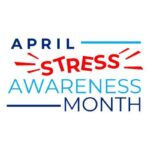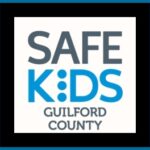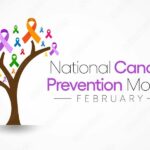Frequently Asked Questions
The e-cigarette is a fairly new nicotine delivery system that mimics tobacco smoking. It contains three basic parts: a plastic mouthpiece and liquid reservoir, an atomizer that vaporizes the liquid, and a battery. E-cigarettes are not approved by the FDA (Food & Drug Administration) and have been blasted for marketing to teens. Rigorous clinical studies need to be conducted to back safety claims and use as an effective smoking cessation device.
We don’t know the short or long term health effects of breathing the nicotine concentration in or out. At first glance, the vaporized liquid seems to be less harmful than tobacco smoke. For current, adult smokers, the e-cigarette may be a viable option to reduce the harmful effects of smoking. However, e-cigarettes do contain cancer causing chemicals and are not without risk. For example, some contain diethylene glycol, a chemical used in anti-freeze. Nicotine is the poison that causes addiction in smokers. Research shows that the best way to quit smoking is with support.
Talk to your doctor, find a community group or contact 1-800-QUIT-NOW (hyperlink – http://www.smokefree.gov/Default.aspx) for free, comprehensive tools and support.
Teens specific resources are also available (here – hyperlink http://teen.smokefree.gov/)
Drugs are more dangerous now than even a generation ago. For example, marijuana’s potency has increased from an average of 4% to 10% in just the last 20 years (citation: https://www.cnn.com/2009/HEALTH/05/14/marijuana.potency/index.html). Some samples of seized marijuana measured a potency of 30%. This increase in strength typically changes a user’s experience and increases the likelihood of irritability, paranoia, psychosis, and hospitalization.
The internet is ripe with information as well as misinformation. Pro-drug websites and internet pharmacies may skew facts to make a point or a profit. Sites also provide information on drug manufacture, use, descriptions of drug highs, recommended doses, and more. Drugs made in home labs vary in strength and may contain bacteria and other dangerous chemicals.
Youth grow rapidly from puberty to adulthood. In fact, the teen brain is not fully developed until the early to mid 20’s. Drugs interrupt brain growth especially linked to decision making, impulse control, and weighing consequences of actions. Social and emotional growth is stunted as well. For example, a teen may rely on alcohol to loosen up at a party rather than learn the skills needed to navigate the social scene.
As adolescents age, they gain more freedom, more responsibilities, and more stress. They feel invincible, like nothing bad can happen. Drug references and influences permeate their world. Celebrities and musicians trying to sell an image make drug use seem normal, okay, cool.
Drugs also act differently on the teen brain. Studies show that the earlier someone starts using drugs, the more likely they are to have drug problems later in life. Alcohol affects teens differently than adults. Youth are less likely to show warning signs of drinking too much like ataxia (stumbling, falling) and passing out.
- #1 Be there. Support your child’s talents and hobbies. Actively participate in school events and make homework a priority. Know what your child is doing – their activities and how they spent their time.
- #2 Be available. Start “The Talk” early and talk often. Ask questions and really listen to the answers. Know your child’s friends and their parents. Youth that have friends who are drug free are more likely to be drug free as well.
- #3 Be a parent. Set household rules and reasonable consequences before problems arise. Be consistent in enforcing the rules. Youth need limits and set boundaries. Encourage goal setting. Discuss how drugs would impact goals and future success. Encourage exercise and proper nutrition.
- #4 Be knowledgeable. Know that no one is immune from the dangers of drugs. Accidents, overdose, etc can happen any time. Talk about your expectations and the dangers of drugs.
Resources vary by county. Information can be found by contacting your local mental health agency, drug treatment provider, doctor, school social worker, or searching the internet.
Drug free teens are the silent majority. They need support from adults and each other to continue to make healthy decisions. Drug free youth also need a voice. Our actions are often influenced by what we think others are doing. If freshmen enter high school believing that most teens smoke, they are more likely to start. If adults think alcohol is a natural part of prom or graduation, they may allow underage drinking or do little to prevent it.
Drug use is also dangerous and costly for those that use. Consequences range from injuries and unintended pregnancies; to medical conditions such as asthma, depression, anxiety, psychosis and impaired brain function; to reduced academic performance and educational achievement; to criminal involvement and even death.
No, it’s against NC law to give alcohol to anyone under 21, even your own child. Drunk driving accidents are only one of the many negative consequences of underage drinking. Other accidents and risky behavior can include overdose, fights, violence, pregnancy, STDs, drowning, and/or arrest. Alcohol stunts brain growth and development in adolescents.
If a teen drinks in your home, you can be held criminally and financially responsible for any property damage or bodily harm that happens as a result.
Signs and symptoms vary according to the drug. Some overall changes may alert you to a potential problem though. These are only a guide. You know your child best. If you are concerned, share it with your teen. He/she may be struggling with another issue and not know how to bring it up to you. Overall, look for changes in:
School – Excessive tardies, missing classes, decreased interest, falling or failing grades, dropping extracurricular groups, sports
Health– Increased or decreased energy, loss of motivation, increase in colds, finding cough/cold medicines or prescription bottles when he/she isn’t sick
Appearance – Change in clothing styles or loss of interest in clothing, use of breath spray (used to mask the scent of smoke or alcohol), excessive use of Visine (to mask use of marijuana)
Behavior – Barring family from bedroom or car, friends that don’t visit, leaving without telling where they are going or who they are with; mood swings, sleep habits, appetite
Money – Asking for money, can’t explain how money was spent, money or valuables lost or stolen, money missing from other family members
- Pain killers (Vicodin, OxyContin) – used to block pain messages
- Stimulants (Ritalin, Adderall) – used to treat ADHD and narcolepsy
- Sedatives (Valium, Xanax) – used to treat anxiety, tension, panic attacks, & sleep problems
- Over The Counter cold medicines with DXM
- More teens are abusing prescription drugs than any illegal drug except marijuana.
- 1 in 3 teens claim there’s “nothing wrong” with misusing prescription drugs once in a while
- Misused medicines and street drugs act on the same receptors in the brain to release the “feel good chemical” dopamine. (for example: pain killers and heroin; or cocaine and stimulants used to treat ADHD)
- Medicine abuse is easy to hide, often referred to as the “silent addiction.”
- Parents and teens understand and talk about the dangers of alcohol, tobacco & other drugs. We don’t think about including rules to promote medicine safety.
- In adolescence, the brain is growing at a fast pace. This part, called the prefrontal cortex, controls decision making, impulse control, and weighing consequences. Drug use stunts this growth and makes teens more vulnerable to addiction.
- Teens feel invincible and have different goals regarding drug use. They may push boundaries and seek a specific high. Youth tend to mix medications with each other and with alcohol – making the combination more dangerous and even deadly.
- Self medication or to escape problems
- Thrill seeking/curiosity
- Self esteem (high or low)
- Social skills (take time to develop)
- Less of a stigma versus street drugs
- Myth that it’s safe (believe medicines are not addictive, see family or friends taking medicine)
- Easy to find & often free (medicine cabinets or misuse their own medicines)
- Easier to hide (no smoke, smell or aftertaste)
- Believe that parents are less likely to be angry
Stimulants
Sedatives/depressants
Pain Killers
|
Behavioral Signs
|
- Remind them that most teens choose not to use drugs. If someone tells a story about the weekend, we sometimes assume everyone listening behaves that way. It is hard to speak up in a crowd. Once one person does, others will follow.
- Research shows that talking works. Teens who learn of drug dangers at home are half as likely to try prescription (& other) drugs.
- Find teachable moments on TV, in the news, or in music. What message do you hear? What do you think about it?
- Really listen. Let go of your thoughts and beliefs. Ask questions and see the world from his point of view. Most importantly, resist the urge to preach.
- Check in regularly. Keep the lines of communication open. Make sure teens talk to an adult even if it’s not you.
- Notice positive behaviors and say thank you. They’ll likely repeat the behavior.
Tons! Realize that prescription medications have a place and can benefit us when used by the right person, at the right dose, in the right way.
70% of teens say they get medicines from a friend or family member, often for free. Don’t share prescriptions. Monitor, secure, and dispose of your medicines safely.
Monitor:
- Keep a list of all medicines in your home
- Count your pills – inventory all medicines at least twice a year
- Track refills
Secure:
- Gather medicines from counters, drawers, and purses
- Lock up medicines especially those that can be abused
- Store them out of reach & sight
- Use the alarm on your cell or a note on the fridge to remind you to take medicines
Dispose:
- Clean out your medicine cabinet often
- Take old, unused medicines to a permanent drop boxDrop them off at a take back event
- At home: Dissolve pills in water first.
- Then pour liquid medicines and/or water mixture into a bag of kitty litter, charcoal, or other gross material.
- Hide in your regular trash.Only a few medicines can be flushed
Also …
- Know the signs & symptoms of drug use
- Team up with friends, family, neighbors, doctors, pharmacists, and others who share your concern.
- Talk about medicine safety with teens and other adults. Explore the issue and brainstorm solutions.
- Be a role model. Use medicines safely. Eat right, exercise and get enough sleep to stay healthy and relieve stress. Share examples of how you effectively handle problems and set a positive example for teens.
- Take action. Invite someone from ADS to speak at your church or community center.











